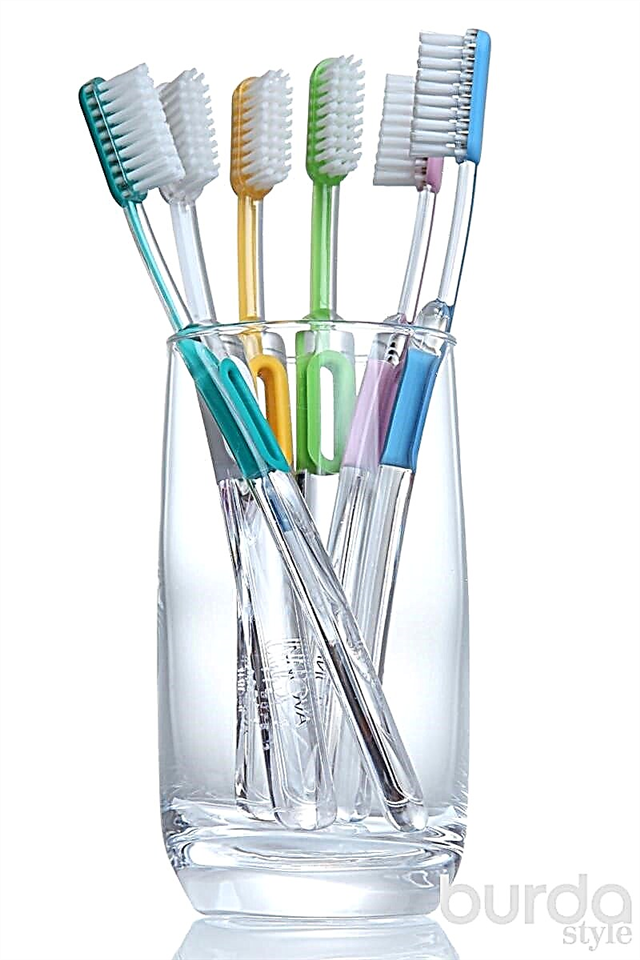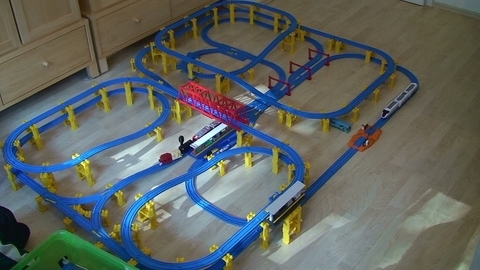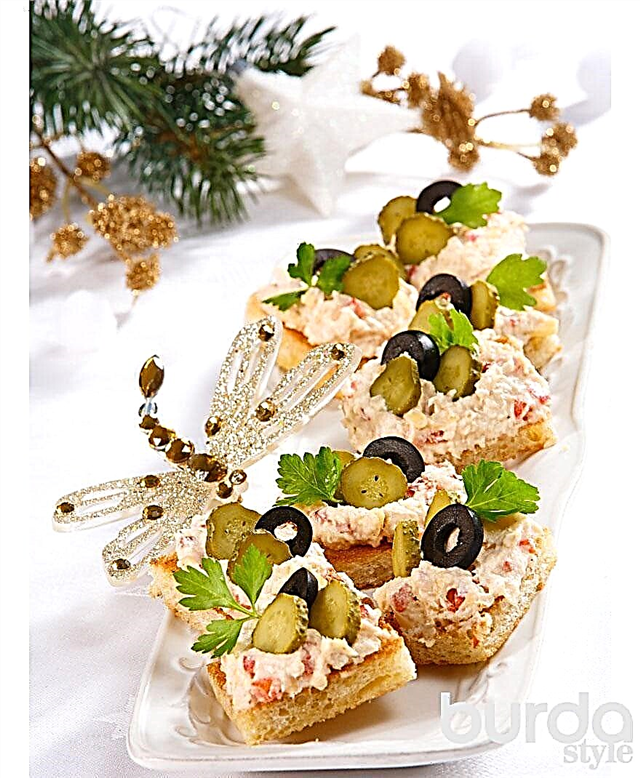How the teddy bear appeared, how it differs from other toys and how to learn how to sew such a bear with your own hands - in our review of the most adored toys in the world.
Today, the teddy bear is not only one of the most famous toys in the world, but also a collectible and adoring item - since the "official invention" of such bears at the beginning of the last century, real "teddymania" has developed in the world. Of course, soft toys sewn from fabric existed before that, there are many of them even now, but such a love as teddy bears is awarded a rare "toy look".

Photo: teddybears.co.uk

Photo: etsy.com
How to create Tilda dolls
How did the teddy bear appear?

Washington Post caricature of Teddy Bear
The bear received its name in honor of the American president Theodore Roosevelt. The official legend says: in 1902, during a hunt, huntsmen drove a bear and tied him to a tree to please the president, but Roosevelt refused to shoot a defenseless beast, calling it "unsportsmanlike". Soon, the Washington Post spoke about the incident, illustrating the note with a cartoon of Clifford Barryman. On it, the president turns away from the bear, depicted as small and scared. The figure was reprinted by other newspapers. Morris Michtom, a Russian expat who owns a toy store in New York, saw the picture. Morris's wife, Rose, sewed a toy in the image of a bear from a cartoon, and the teddy bear was displayed in a window next to the picture. The bear was a success, and Morris asked Roosevelt to give the toy the name of the president. Having received the consent and name for the new toy - Teddy (a diminutive of Theodore), Mittom in 1903 organized the company Ideal Toy Company, which was engaged in the production of such bears.

Morris Michtom and his first teddy bear
Interestingly, in parallel with this story, which developed in the USA, another birth of a teddy bear took place in Germany. The German bear was created in 1902 - it was created by Richard Steif, nephew of Margaret Steif, the owner of Steiff (a company founded as a sewing company, which later became a famous toy company). The prototype of the Steiffe bear was a circus bear, who knew how to stand on its hind legs and perform various tricks. The toy bear, accordingly, should have been endowed with the same skills. To this end, Steif developed original movable head and paw mounts to the bear's body using cords. Today, the cords are replaced with more reliable discs and cotter pins, but the "ability" to rotate the head and paws is still a must for the bear.

Richard Steif with his first bear

Margaret Steiff and Teddy Bear Steiff
The first teddy boom occurred in America in the mid-1900s. Bears became not just a popular toy (but this too): poems and songs were dedicated to them, carried with them (including taking to social events), and Theodore Roosevelt made a bear named after himself as his talisman (and was elected for a second term).
In Europe, the boom came in 1920−30. In 1924, Walt Disney made a cartoon about a teddy bear, in 1926 Milne published a book about Winnie the Pooh (the prototype of the protagonist was a living bear from the zoo, and a teddy bear named Winnipeg, the favorite of his son Christopher).

Christopher Robin Milne and Winnipeg, circa 1926
Bears were sewn from plush of different colors, the most expensive ones were made of silk velvet. The first teddy bears came to Russia from abroad in the 1930s. Then they began to sew such cubs with us. Most often, only paws were mobile in these toys, and the head was fixed to the body motionless.

Photo: thevintagemagpie.typepad.com
During World War II, the mass production of teddy bears was discontinued, and the toy was forgotten for a while. A new wave of interest in bears rose in the 1960s.The revival of "teddymania" contributed to the English actor Peter Bull. From childhood, who had a tender love for these toys, in adulthood, he decided to find adherents of teddy like him and gave several announcements asking him to send him stories about bears. Bull is filled up with letters, he is invited to participate in radio and television programs, he writes a book and gets fame as "The Elder of the World of Teddy Bears", and the world again recalls teddy bears. Perhaps it was Bull who laid the foundation for a special attitude of people to these toys: in his book he told several real stories demonstrating how great an emotional attachment of a person can be to a teddy bear toy and how these feelings can affect fate and life.

Peter Bull with a teddy bear
Production of designer bears began in the 1970s. The first "exclusive" bears were made in America, a little later Steiff released a batch of collectible bears. In 1984, the first Bear Museum was opened in the UK. In Russia, the collection of bears was first shown at the Vakhtangov Gallery in 1999. Domestic teddists first showed work at an international exhibition in Germany in 2002, and since 2004, an exhibition of collection teddies has been regularly held in our country.
Photo: depeluche.net; kiseg.com
Learning to create teddy bears: youtube channel of the week
How is the teddy bear different from other toys?

Photo: gyllenship.blogspot.com
- The teddy bear is not a mass product, but an exclusive one. They are sewn either in small batches, or in a single copy, often manually.
- Patterns are often developed by the author himself (there are also classic old patterns). Traditionally, the bear should have special proportions.
- The teddy bear’s head and legs should be mobile and rotate 360 degrees. To do this, the paws and head are attached to the body using discs and cotter pins.
- Special materials are used to make teddy. Often this is the so-called "mohair" (thick cotton fabric with a pile of pure wool or natural silk fibers), also - natural cotton plush, viscose. Of the artificial materials, true teddists of bears do not sew.

Photo: tamieveslage.com
- Natural materials are also traditional for stuffing - sawdust, straw, sometimes with the addition of aromatic herbs. To make some parts of the body and legs heavier, granulate (heavy metal or glass balls) is added.
- Making the face is also a special art. Factory plastic eyes are not used here, ideally they are made manually of glass. The nose is either embroidered or made of polymer. Sometimes the finished bears are artificially aged, tinted, skin, muzzle, giving each toy an individuality.
- Truly original teddy bears can be very expensive. You can buy them from masters, in art salons, at exhibitions, at auctions (prices can reach several tens of thousands of dollars). Often each bear has its own name, sometimes it is dressed in a certain outfit, also made very carefully and carefully.
By the way, today not only bears belong to the concept of teddy - other toys (bunnies, elephants, etc.) are made on the same principle.
Home decor and toys from a passionate needlewoman: instagram of the week
What do novice teddists need to know?

Photo: tamieveslage.com
Teddists are masters who specialize in making teddy bears. If you want to try yourself in this role and / or eventually become one of them, pay attention to the recommendations of the pros. And keep in mind: making teddy toys is a special art, different from making other toys. The world of teddy is special, making a teddy is not very simple, but the result is worth it!

Photo: pinterest.com/jane1911
1. Stock up on recommended materials.

Photo: loppi-baeren-onlineworkshops.de
- The cloth
Do not use faux fur. It is based on knitwear that will not allow the bear to maintain the desired shape and will not allow to make a dense padding. Plus - natural materials look much more beautiful.If it is not possible to buy the so-called mohair (it is sold in specialized stores and is quite expensive), take, for example, viscose with a pile or vintage plush (maybe you will find something in the bins of the house or in the country). For the soles of the paws, you can take cotton, suede, velvet.
- eyes
It is best to take glass, on an eyelet or pin. Sold in specialized stores.
- Cotter pins, discs and washers
Without them, the teddy bear will not be such! So you have to master the science of attaching these devices to the trunk and legs. Cotter pins can also be bought in specialized stores. Also for their fastening you need special tools (for example, thin-nose pliers). How to attach the paws and head - see below in the video master classes.
- Stuffing
Classic - sawdust (sold in teddy stores or at pet stores). Modernity - syntepuh (holofiber). Cheaper and easier to use synthetic material. Not everyone recognizes it, although it is used quite often. You can start a novice teddist with a holofiber. If you want to weight parts of a bear, you will need granulate (glass or metal, also sold in specialized stores).
- For embroidery of the nose and mouth you need threads (floss, iris) and a needle.
- To sew the bear itself you need a needle and durable thread in the color of the fabric.
- For tinting or painting the muzzle use textiles or special markers.
- You will also need scissors, an awl, stuffing aids (for example, wooden sticks), even leather gloves (so as not to be cut with threads when they are especially tightened).
2. Take advantage of the classic pattern.
For example, this:

Photo: pinterest.com/zadanasos

Photo: pinterest.com/kleinkatarzyna
Or find and download something to your liking on one of the sites dedicated to making teddy bears.
3. To begin with, you can practice and sew a “draft” bear from dense cotton fabric, and then take on a “mohair” or plush.
4. Find craftsmen or craftsmen whose bears you like and share the secrets of making them in MK or videos, and follow the advice of a pro from the beginning.
5. Another option is to buy a book or several and learn from them. Look at the books of Gemma Kudge, Keiko Toshikura translated into Russian, as well as the books of Lydia Mudragel, Guzel Kostyna.
Work sequence:

Photo: curiousmondo.com
1. Download the pattern, transfer it to the fabric, add allowances (0.5-0.7 cm), cut out the details.
2. Sew details, turn them out. If the fabric with a pile, pull out the pile that has fallen into the seam with a needle.
3. Fill the parts except for the body (with sawdust, holofiber, adding granulate or not). Tamp the stuffing well with chopsticks. Insert disks and cotter pins in the middle of the packing process. Fill the parts to the end, sew up the holes, connect the body, legs, head. Sew eyes to the head first. Fill and sew up the body.
4. Make a muzzle (embroider nose and mouth, toned).
We sew soft toys - a cat and a dog
Workshops on making teddy bears:
How to sew a simple bear: pattern, cutting, stitching parts, stuffing - master class
How to insert cotter pins into teddy bear's paws - master class
Moving bear head mount - workshop
How to assemble a bear - master class
Photos of teddy bears for inspiration:

Photo: @olesiagergel

Photo: @teddysphera

Photo: @teddysphera

Photo: @_happyamigurumi

Photo: @makayla_mason_

Photo: @soniniigrushki

Photo: @ marta.arts

Photo: @anna_pavelieva

Photo: @olga___sycheva

Photo: @milazdolls

Photo: @hypatiaru

Photo: @teddysphera

Photo: @joanandbears

Photo: @k_kenga

Photo: @ ju.julia.g
Preview photo: cloudinary.com



